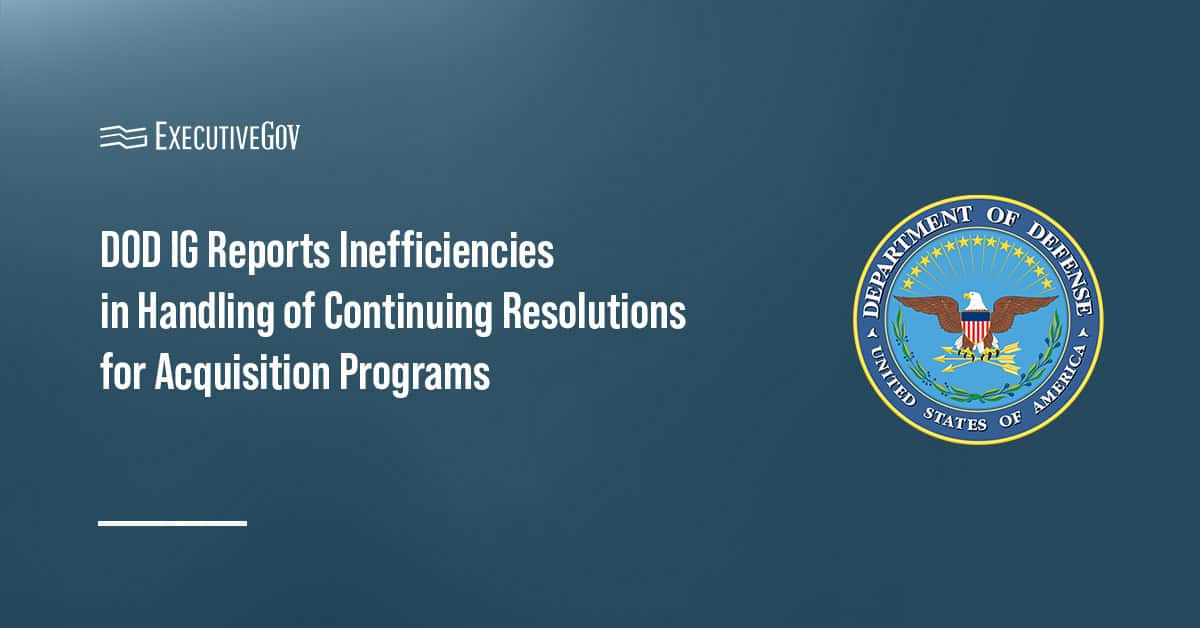A new report found that the Department of Defense is not effectively managing acquisition programs operating under continuing resolutions. In the Audit of the Impact of Continuing Resolutions on DOD Acquisition Programs, published Thursday, the department’s Office of Inspector General, or OIG, the Pentagon did not track or adequately communicate the impact of CRs on acquisition programs.
Table of Contents
DOD OIG’s Report Findings
One of the issues the OIG found is the lack of guidance for requests to exempt programs from CR. In fiscal 2024, military services submitted a total of 87 acquisition-related anomaly requests, but only one was approved by Congress.
Officials also reported a lack of clarity on whether programs undergoing administrative change would be considered a new start. The OIG said the problem stemmed from the Pentagon not communicating how the new start constraint could apply to existing programs.
Moreover, the DOD’s budget execution reviews did not take into account delayed or limited funding under CRs.
As a result, CRs led to program delays, which could affect national security and defense. Officials also shared that CRs created additional administrative burdens and cost inefficiencies.
As a result, CRs led to program delays, which could have a negative effecy on national security and defense. Officials also shared that CRs created additional administrative burdens and cost inefficiencies.
“Because the DOD did not track the impact of CRs, the impact on national security, the Defense Industrial Base, and program costs and schedules across the DoD is unknown,” commented Brett Mansfield, deputy inspector general for audit at the Pentagon. “Better processes for tracking the actual impacts will help the DoD to communicate to Congress the consequences of CRs on DOD acquisition programs.”
How DOD Can Improve
The OIG made several recommendations to the under secretary of defense (comptroller) and the department’s chief financial officer.
One recommendation is to develop a method to track the impacts of CRs on acquisition programs. The OIG also advised the DOD to establish parameters for anomaly requests.





